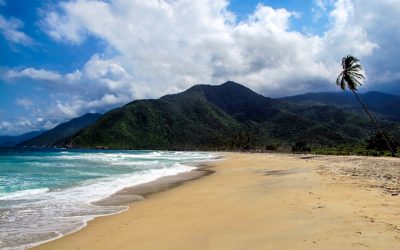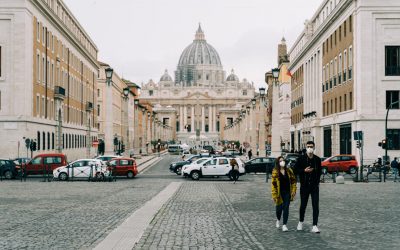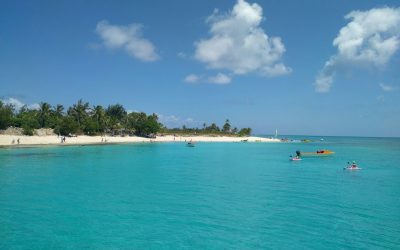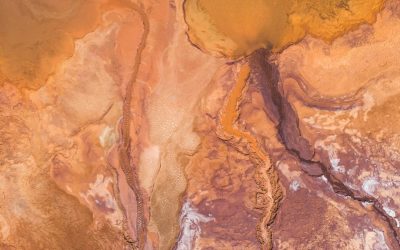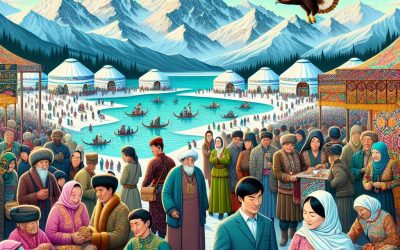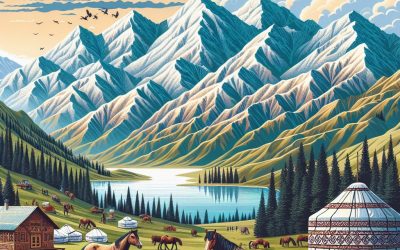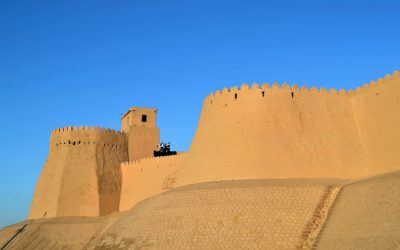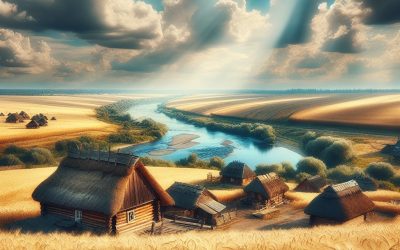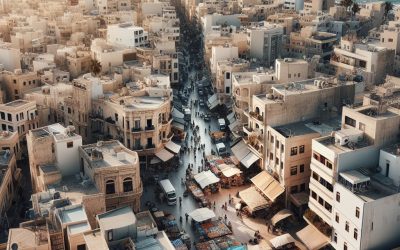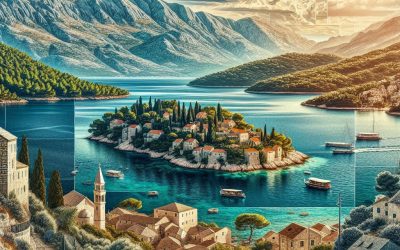Explore the World Through Geography, Natural Resources & Daily History
Clear, reliable and engaging guides that help you understand our planet — from UK geography education to global natural resources and On This Day history events.
Explore, discover, and learn about the wonders of our world! At Earth Site, we’re passionate about bringing geography, history, and science to life for curious minds of all ages. Whether you’re delving into historical events, uncovering the mysteries of the natural world, or seeking interactive resources, you’re in the right place.
Here, you can uncover the stories behind historical events, explore the natural wonders of our planet, and gain valuable insights into how the Earth’s systems shape our daily lives. From the towering peaks of mountain ranges to the far-reaching impacts of human innovation, we aim to make every topic both engaging and informative.
Start your journey of discovery with us today, and let’s make learning an adventure!
What We Cover
Earth Site brings together engaging and accessible educational content designed to help you understand the world, its history, and its natural systems.
🌍 Geography Education (UK & Worldwide)
We publish clear, easy-to-understand geography resources for students, teachers and curious learners. Our guides support geography education in the UK and cover physical geography, climate, ecosystems, population, and global development.
⛏️ Natural Resources & Environmental Geography
Explore detailed country profiles covering natural resources, mining, energy, geology and global environmental challenges. We show how nations manage minerals, water, land and ecosystems, and why these resources matter.
📅 On This Day in History
Every day has a story. Our On This Day history series features major events, anniversaries, traditions, and cultural milestones from around the world — with timelines, context, and fun facts.
TIMELINE
Exploring the Hidden Gems of Cherkasy: A Journey Through the Heart of Ukraine
Cherkasy, located in central Ukraine, is a city with a rich history and vibrant culture. The city dates back to the 13th century and has been influenced by various civilizations throughout the centuries. From its medieval roots to its modern-day charm, Cherkasy offers visitors a unique blend of historical landmarks, cultural attractions, and natural wonders. Cherkasy is worth visiting for several reasons. Firstly, its historical significance cannot be overlooked. The city has played a crucial role in Ukrainian history, with many important events taking place within its borders. From the Cossack era to the Soviet period, Cherkasy has witnessed the rise and fall of empires, making it a fascinating destination for history enthusiasts. Secondly, Cherkasy’s cultural scene is thriving. The city is home to numerous museums, galleries, and theatres that showcase Ukrainian art and culture. Visitors can immerse themselves in the local traditions and customs through various festivals and celebrations held throughout the year. Cherkasy’s cultural heritage is deeply rooted in its people, and exploring the city’s cultural offerings is a must for anyone looking to experience the true essence of Ukraine. Summary Cherkasy is a city with a rich history and culture, offering a variety of experiences for visitors. The natural wonders of Cherkasy, including the Dnieper River and Kremenchuk Reservoir, are not to be missed. Cherkasy’s architectural treasures are hidden gems waiting to be discovered. The city’s museums and galleries offer a journey through Ukrainian art and history. Tasting the flavours of Cherkasy is a culinary adventure through the heart of Ukraine. Discovering the Natural Wonders of Cherkasy: From the Dnieper River to the Kremenchuk Reservoir One...
Venezuela’s Turmoil: A Deep Dive into the Country’s Economic and Political Crisis
Venezuela is currently facing one of the most severe crises in its history. The country is plagued by hyperinflation, food and medicine shortages, and political instability. It is important to understand the history and causes of this crisis in order to fully grasp the magnitude of the situation and find possible solutions. Summary Venezuela’s turmoil is a result of a combination of factors, including economic collapse, hyperinflation, humanitarian crisis, corruption, and political unrest. Hugo Chavez’s socialist revolution initially brought hope to the country, but mismanagement and corruption led to its downfall. The economic collapse of Venezuela was caused by a combination of factors, including over-reliance on oil, mismanagement, and corruption. Hyperinflation and the collapse of the Bolivar have had a devastating impact on Venezuelans, leading to food and medicine shortages and widespread poverty. The Maduro government’s corruption and mismanagement have exacerbated the crisis, leading to international sanctions and diplomatic pressure. The Rise and Fall of Hugo Chavez’s Socialist Revolution Hugo Chavez, a charismatic leader, came to power in Venezuela in 1999 with promises of a socialist revolution that would uplift the poor and marginalized. He implemented a series of policies aimed at redistributing wealth, nationalizing industries, and providing social programs for the most vulnerable. While Chavez’s policies initially gained popularity among the lower classes, they soon faced criticism for their impact on the economy. The nationalization of industries led to a decline in productivity and efficiency, while price controls and currency manipulation created distortions in the market. As a result, Venezuela became heavily dependent on oil exports, leaving it vulnerable to fluctuations in oil prices. Chavez’s death in 2013...
The Wonders of Vatican City: Exploring the Holy See’s Rich History and Culture
Vatican City, the world’s smallest independent state, holds a significant place in the hearts of Catholics worldwide as the spiritual and administrative center of the Roman Catholic Church. Nestled within the city of Rome, Italy, Vatican City is home to iconic landmarks such as St. Peter’s Basilica, the Vatican Museums, and the Sistine Chapel. The city-state’s rich history, art treasures, and religious significance draw millions of visitors each year, making it a must-visit destination for those interested in history, art, and spirituality. Summary Vatican City is the smallest independent state in the world, with a rich history dating back to the 4th century. The Vatican Museums house an impressive collection of art and artifacts, including works by Michelangelo and Raphael. The Sistine Chapel is a must-see for visitors, featuring Michelangelo’s iconic ceiling fresco and Last Judgment painting. St. Peter’s Basilica is the largest church in the world and a symbol of the Catholic faith. The Swiss Guard, established in the 16th century, is responsible for protecting the Pope and the Vatican City State. Vatican City: A Brief History of the Holy See The origins of the Holy See can be traced back to the early days of Christianity when St. Peter, one of Jesus’ apostles, is believed to have been appointed as the first Bishop of Rome. Over the centuries, the Bishop of Rome became known as the Pope, and Rome emerged as a significant center of Christianity. In 1929, with the signing of the Lateran Treaty between the Holy See and Italy, Vatican City was established as an independent city-state, ensuring the Pope’s sovereignty over a small territory...
Discovering the Hidden Gems of Vanuatu: A Journey Through the Picturesque Islands
Nestled in the South Pacific Ocean, Vanuatu is an archipelago of 83 stunning islands known for their unspoiled natural beauty, rich cultural heritage, and vibrant local communities. This tropical paradise offers a unique travel experience for those seeking an off-the-beaten-path destination. From lush rainforests and pristine beaches to active volcanoes and vibrant coral reefs, Vanuatu has something to offer every type of traveller. Vanuatu is a great travel destination for those looking to escape the crowds and immerse themselves in a truly authentic island experience. The warm hospitality of the locals, known as Ni-Vanuatu, adds to the charm of this destination, making visitors feel welcome and at home. Whether you’re seeking adventure, relaxation, or cultural immersion, Vanuatu has it all. With a range of activities to suit every interest, from hiking and diving to exploring traditional villages and sampling local cuisine, Vanuatu promises a memorable and enriching travel experience. Summary Vanuatu is an archipelago of hidden gems, offering unspoiled natural beauty, rich cultural heritage, and unique wildlife. Exploring Vanuatu’s natural beauty includes visiting stunning beaches, hiking through lush rainforests, and diving in crystal-clear waters. Vanuatu’s cultural heritage is a journey through time, with traditional villages, ancient rituals, and fascinating stories of the island’s history. The best beaches in Vanuatu offer sun, sand, and serenity, with options for relaxation or adventure, such as surfing, snorkelling, or kayaking. Tasting the flavours of the Pacific is a foodie’s dream, with fresh seafood, tropical fruits, and unique local dishes to try in Vanuatu. Exploring the Unspoiled Natural Beauty of Vanuatu Vanuatu boasts some of the most breathtaking landscapes in the South Pacific, with...
The Importance of Zinc (Zn) in Maintaining Optimal Health and Wellness
Zinc is an essential mineral that plays a crucial role in maintaining overall health and wellness. It is involved in various physiological processes in the body, including immune function, cognitive function, skin health, wound healing, vision, reproductive health, bone health, and gut health. Zinc is not produced by the body, so it must be obtained through diet or supplementation. In terms of dietary sources, zinc can be found in a variety of foods. Some of the best sources of zinc include red meat, poultry, seafood (such as oysters and crab), dairy products, nuts and seeds (such as pumpkin seeds and cashews), legumes (such as chickpeas and lentils), and whole grains. It is important to consume an adequate amount of zinc through diet to ensure optimal health and wellness. Zinc plays a vital role in supporting immune system function. It is involved in the development and function of immune cells, such as T cells and natural killer cells, which help the body fight off infections. Research has shown that zinc supplementation can help reduce the duration and severity of colds and other respiratory infections. Zinc also has anti-inflammatory properties that can help modulate the immune response and reduce inflammation in the body. When it comes to cognitive function and mental health, zinc also plays a significant role. Zinc is involved in neurotransmitter function and communication within the brain, which can impact mood, memory, and learning. Research has shown that zinc deficiency is associated with cognitive impairments and mood disorders such as depression. Supplementing with zinc has been shown to improve mood and cognitive function in some studies. In terms of...
Kazakhstan
Kazakhstan (Kyrgyz Respublikasy (Kyrgyz); Respublika Kirgizstan (Russian) (Kyrgyz Republic)) Capital: Bishkek Population (Estimated July 2012): 5,496,737 Area: 199,945 km2 or 77,199 mi2 Currency: Kyrgyzstan Som (KGS) Official Language: Kyrgyz; Russian Political Information: Parliamentary Republic Official Religion: No Official Religion (approximately 75% of the population are Muslim, 20% are Russian Orthodox and 5% have other religious beliefs). Highest Mountain: Jengish Chokusu (Victory Peak) at 7,439m or 24,406ft GDP Official Exchange Rate (OER is more precise at gauging a countries economic power) (Estimated 2011): $180.1 billion (US$) or (GBP) GDP (OER) Per Capita (per member of the population estimated 2011): (US$) or (GBP) GDP Purchasing Power Parity (PPP is good for gauging living conditions and use of resources but not as accurate as OER. This data has been calculated based on the sum value of all goods and services produced in the country valued at prices prevailing in the United States) (Estimated 2011): $216.4 billion (US$) or (GBP) GDP (PPP) Per Capita (per member of the population estimated 2011): $13,000 (US$) or (GBP) Time Zone (GMT/UTC): +6:00 Wildlife: Counties/Provinces/States: 7 provinces (oblastlar, singular – oblasty) and 1 city* (shaar); Batken Oblasty, Bishkek Shaary*, Chuy Oblasty (Bishkek), Jalal-Abad Oblasty, Naryn Oblasty, Osh Oblasty, Talas Oblasty, Ysyk-Kol Oblasty (Karakol) Leaders: President Almazbek Atambayev, with Prime Minister Omurbek Babanov. Additional: Gained independence from the Soviet Union on the 31st of August 1991. Kazakhstan Kazakhstan, the world’s largest landlocked country, is located in Central Asia and Eastern Europe. It shares borders with Russia, China, Kyrgyzstan, Uzbekistan, and Turkmenistan, as well as the Caspian Sea to the west. The country is known for its diverse landscapes, ranging from the Caspian lowlands to the Altai Mountains and the vast steppes....
Kyrgyzstan
Kyrgyzstan (Kyrgyz Respublikasy (Kyrgyz); Respublika Kirgizstan (Russian) (Kyrgyz Republic)) Capital: Bishkek Population (Estimated July 2012): 5,496,737 Area: 199,945 km2 or 77,199 mi2 Currency: Kyrgyzstan Som (KGS) Official Language: Kyrgyz; Russian Political Information: Parliamentary Republic Official Religion: No Official Religion (approximately 75% of the population are Muslim, 20% are Russian Orthodox and 5% have other religious beliefs). Highest Mountain: Jengish Chokusu (Victory Peak) at 7,439m or 24,406ft Largest River: Time Zone (GMT/UTC): +6:00 Wildlife: Counties/Provinces/States: 7 provinces (oblastlar, singular – oblasty) and 1 city* (shaar); Batken Oblasty, Bishkek Shaary*, Chuy Oblasty (Bishkek), Jalal-Abad Oblasty, Naryn Oblasty, Osh Oblasty, Talas Oblasty, Ysyk-Kol Oblasty (Karakol) Leaders: President Almazbek Atambayev, with Prime Minister Omurbek Babanov. Additional: Gained independence from the Soviet Union on the 31st of August 1991. Kyrgyzstan Kyrgyzstan, officially the Kyrgyz Republic, is a landlocked nation situated in Central Asia. It shares borders with Kazakhstan to the north, Uzbekistan to the west, Tajikistan to the south, and China to the east. Bishkek serves as the capital and largest city. The country boasts a diverse population comprising Kyrgyz, Uzbeks, Russians, and other ethnic groups, each contributing to its rich history and culture. Following its independence from the Soviet Union in 1991, Kyrgyzstan has endeavoured to establish a stable and prosperous nation. The country is renowned for its breathtaking natural landscapes, including majestic mountains, pristine lakes, and verdant valleys. Kyrgyzstan’s cultural heritage is equally impressive, featuring traditional crafts, music, and cuisine that reflect its multicultural society. Visitors to Kyrgyzstan can partake in a variety of activities, from outdoor pursuits such as trekking and horse riding to exploring ancient historical sites. The warmth and hospitality of the Kyrgyz people further enhance the visitor experience....
Uncovering the Hidden Gems of Uzbekistan: A Journey Through Central Asia’s Cultural Heartland
Nestled in the heart of Central Asia, Uzbekistan is a land of rich culture and history that beckons travellers from around the world to explore its ancient cities, vibrant bazaars, and stunning architecture. With a history dating back thousands of years, Uzbekistan has been a crossroads of civilizations and a key stop along the legendary Silk Road. This unique blend of influences is evident in the country’s art, architecture, and cuisine, making it a must-visit destination for those seeking to immerse themselves in a world of beauty and wonder. One of the crown jewels of Uzbekistan is the ancient city of Samarkand, a UNESCO World Heritage Site that has captivated visitors for centuries with its magnificent architecture and storied past. Known as the “Pearl of the Orient,” Samarkand was a key trading hub on the Silk Road and boasts a wealth of architectural wonders, including the iconic Registan Square with its stunning madrasas adorned with intricate tile work and the Gur-e-Amir Mausoleum, the final resting place of the great conqueror Tamerlane. Walking through the streets of Samarkand is like stepping back in time to an era of grandeur and splendour. Bukhara, another ancient city along the Silk Road, offers a glimpse into Uzbekistan’s rich history with its historic bazaars and caravanserais that once bustled with merchants from far-flung lands. The city’s labyrinthine streets are lined with traditional craft shops selling everything from silk carpets to hand-painted ceramics, while its well-preserved medieval architecture transports visitors to a bygone era. Must-visit sites in Bukhara include the towering Kalyan Minaret, the bustling Toki Zargaron bazaar, and the ancient Ark fortress, each offering...
Ukraine (Ukrayina)
Ukraine (Ukrayina) Capital: Kiev (Kyiv) Population (Estimated July 2012): 44,854,065 Area: 603,628km2 or 233,062mi2 Currency: Hryvnya (UAH) Official Language: Ukrainian Political Information: Parliamentary Republic Official Religion: No Official Religion (approximately 50.4% of the population is Ukrainian Orthodox – Kyiv Patriarchate, 26.1% are Ukrainian Orthodox – Moscow Patriarchate, 8% are Ukrainian Greek Catholic, 7% are Ukrainian Autocephalous Orthodox, 2.2% are Roman Catholic, 2.2% are Protestant, 0.6% are Jewish and 3.2% have other religious beliefs) Highest Mountain: Hora Hoverla at 2,061m or 6,762ft Time Zone (GMT/UTC): +2:00 Wildlife: Counties/Provinces/States: 24 provinces (oblasti, singular – oblast’), 1 autonomous republic* (avtonomna respublika), and 2 municipalities (mista, singular – misto) with oblast status**; Cherkasy, Chernihiv, Chernivtsi, Crimea or Avtonomna Respublika Krym* (Simferopol’), Dnipropetrovs’k, Donets’k, Ivano-Frankivs’k, Kharkiv, Kherson, Khmel’nyts’kyy, Kirovohrad, Kyiv**, Kyiv, Luhans’k, L’viv, Mykolayiv, Odesa, Poltava, Rivne, Sevastopol’**, Sumy, Ternopil’, Vinnytsya, Volyn’ (Luts’k), Zakarpattya (Uzhhorod), Zaporizhzhya, Zhytomyr Leaders: President Volodymyr Zelenskyy; Prime Minister Denys Shmyhal Additional: Gained independence from the Soviet Union on the 24th of August 1991. Ukraine Ukraine, the largest country in Europe by land area, is a nation steeped in rich history and cultural diversity. Bordered by Belarus to the north, Russia to the northeast and east, and several Central European nations to the west, Ukraine serves as a bridge between East and West. Its capital, Kyiv, is one of the oldest cities in Eastern Europe, with a history that dates back over 1,400 years. The country is known for its vast landscapes, ranging from the Carpathian Mountains in the west to the expansive steppes in the east, and its fertile plains that have earned it the moniker “the...
Greenland (Kalaallit Nunaat (Greenlandic))
Greenland (Kalaallit Nunaat (Greenlandic)) Capital: Nuuk Population (Estimated July 2012): 57,695 Area: 2,166,086 km2 or 836,330 mi2 Currency: Danish Krone (DKK) Official Language: Greenlandic Political Information: Constitutional Monarchy and Parliamentary Democracy Official Religion: Lutheran Church of Greenland Highest Mountain: Gunnbjørn Fjeld at 3694m or 12, 119ft Largest River: Time Zone (GMT/UTC): Between +/-0:00 and -4:00 Wildlife: Counties/Provinces/States: 4 municipalities (kommuner, singular kommune); Kujalleq, Qaasuitsup, Qeqqata, Sermersooq Leaders: Queen Margrethe II with High Commissioner Mikaela Engell and Prime Minister Kuupik Kleist Greenland Greenland, the world’s largest island, is an autonomous territory within the Kingdom of Denmark. Located between the Arctic and Atlantic Oceans, it is known for its stunning natural beauty, including vast ice sheets, towering mountains, and deep fjords. With a population of around 56,000 people, most of whom are indigenous Greenlandic Inuit, the island has a unique culture and way of life. Greenlandic, an Inuit language, is the official language, and the majority of the population is Christian, with a small minority practising Inuit spiritual beliefs. The capital city, Nuuk, is a vibrant hub of culture and commerce, while the rest of the island is sparsely populated, with small settlements scattered along the coast. Greenland has a rich history dating back thousands of years, with evidence of human habitation going back to the Paleo-Eskimo people who first settled the island. In more recent history, Greenland was colonized by the Norse in the 10th century and later became a Danish colony in the 18th century. In 1979, Greenland was granted home rule by Denmark, and in 2009, it gained self-government, although it still relies on Denmark for defense and foreign affairs. The island’s economy is...
Gaza (The Gaza Strip (قطاع غزة (Arabic) Qiṭā Ġazzah))
The Gaza Strip (قطاع غزة (Arabic) Qiṭā Ġazzah) Capital: Gaza (Main City) Population (Estimated July 2012): 1,710,257 Area: 365 km2 or 140 mi2 Currency: Official Language: Arabic, Hebrew. Political Information: Palestinian territory Official Religion: Muslim (approximately 99.3% of the population are Muslim (predominantly Sunni Muslim) and 0.7% are Christian) Highest Point: Abu ‘Awdah (Joz Abu ‘Awdah) at 105m or 344ft Largest River: Time Zone (GMT/UTC): +2:00 Wildlife: Governorates: Dier al-Balah, Gaza City, Khan Yunis, North Gaza,...
Croatia – Republic of Croatia
Croatia (Republika Hrvatska (Republic of Croatia)) Capital: Zagreb Population (Estimated July 2012): 4,480,043 Area: 56,954 km2 or 21,851 mi2 Currency: Kuna (Kn; plural Kune) Official Language: Croatian Political Information: Parliamentary Republic Official Religion: No Official Religion (approximately 87.8% of the population are Roman Catholic, 4.4% are Orthadox, 1.3% are Muslim, 1.3% have other religious beliefs and 5.2% have no religious beliefs) Highest Mountain: Dinara at 1,831m or 6,007ft Time Zone (GMT/UTC): +1:00 Wildlife: Counties/Provinces/States: 20 counties (zupanije, zupanija – singular) and 1 city* (grad – singular); Bjelovarsko-Bilogorska, Brodsko-Posavska, Dubrovacko-Neretvanska (Dubrovnik-Neretva), Istarska (Istria), Karlovacka, Koprivnicko-Krizevacka, Krapinsko-Zagorska, Licko-Senjska (Lika-Senj), Medimurska, Osjecko-Baranjska, Pozesko-Slavonska (Pozega-Slavonia), Primorsko-Goranska, Sibensko-Kninska, Sisacko-Moslavacka, Splitsko-Dalmatinska (Split-Dalmatia), Varazdinska, Viroviticko-Podravska, Vukovarsko-Srijemska, Zadarska, Zagreb*, Zagrebacka Leaders: President is Ivo Josipović with Zoran Milanović as Prime Minister. Croatia Croatia, located in southeastern Europe, is a stunning country known for its beautiful landscapes, rich history, vibrant cities, and delicious cuisine. Situated on the eastern coast of the Adriatic Sea, Croatia shares borders with Slovenia, Hungary, Serbia, Bosnia and Herzegovina, and Montenegro. The country’s geography is diverse, with a mix of mountains, plains, and a stunning coastline that stretches over 1,100 miles. Croatia has become an increasingly popular tourist destination in recent years, attracting visitors from all over the world. The country offers a wide range of attractions and activities for every type of traveller. From exploring ancient ruins and historical sites to relaxing on pristine beaches and indulging in delicious local cuisine, Croatia has something for everyone. Croatia’s Rich History and Culture: From Ancient Times to Modern Day Croatia has a rich and diverse history that dates back thousands of years. The region was inhabited by various tribes and...

